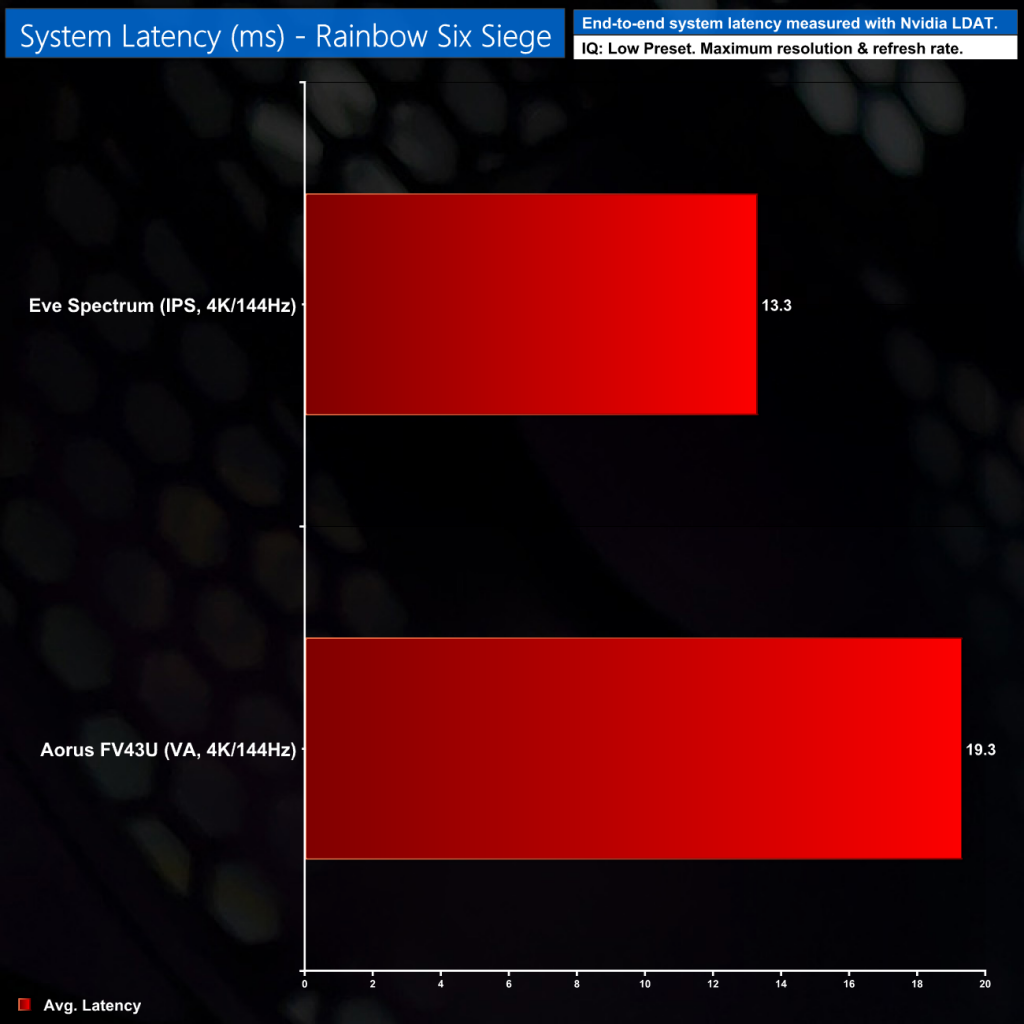System latency is a new addition to our testing, where we use Nvidia’s Latency and Display Analyzer Tool (LDAT) to measure end-to-end system latency. LDAT itself is a photosensor which is placed on the monitor. It has an integrated mouse button, allowing it to measure the total time taken from mouse click, to an action happening on screen, which is done by measuring a change in luminance. This data is logged to a CSV file over USB, allowing for close analysis of the data.
As this is end-to-end system latency, we are not measuring only the processing/input latency of each monitor we test. However, we can standardise the test process so the monitor is the only variable. It also gives an insight into how different refresh rates and resolutions can affect end-to-end latency, which is of course highly relevant to your purchasing decision.
We use Rainbow Six Siege for this testing. We recently changed the graphics settings we test at, to allow for higher frame rates, so the Spectrum is only the second monitor we have tested with LDAT using these settings. That means we currently have limited comparison data, but we will add to these charts as we review more screens.
Average system latency hit 13.3ms, and this is actually a 6ms reduction compared to the Aorus FV43U we reviewed last week. Subjectively speaking, I didn't notice any perceptible input latency from either screen, but it is good to know the Spectrum is managing to reduce total system latency times compared to that Aorus display.
Incidentally, the spectrum does also feature a Low-Latency mode. However, we measured no different in end-to-end system latency when using this mode. We asked Eve about why this would be, and they told us that ‘Low-latency mode keeps the incoming resolution and frame rate unmodified. It is more for compatibility than performance improvement. For example, Adaptive-Sync requires low-latency mode to be on, while monitor scaling is incompatible with low-latency mode.'
Be sure to check out our sponsors store EKWB here
 KitGuru KitGuru.net – Tech News | Hardware News | Hardware Reviews | IOS | Mobile | Gaming | Graphics Cards
KitGuru KitGuru.net – Tech News | Hardware News | Hardware Reviews | IOS | Mobile | Gaming | Graphics Cards



